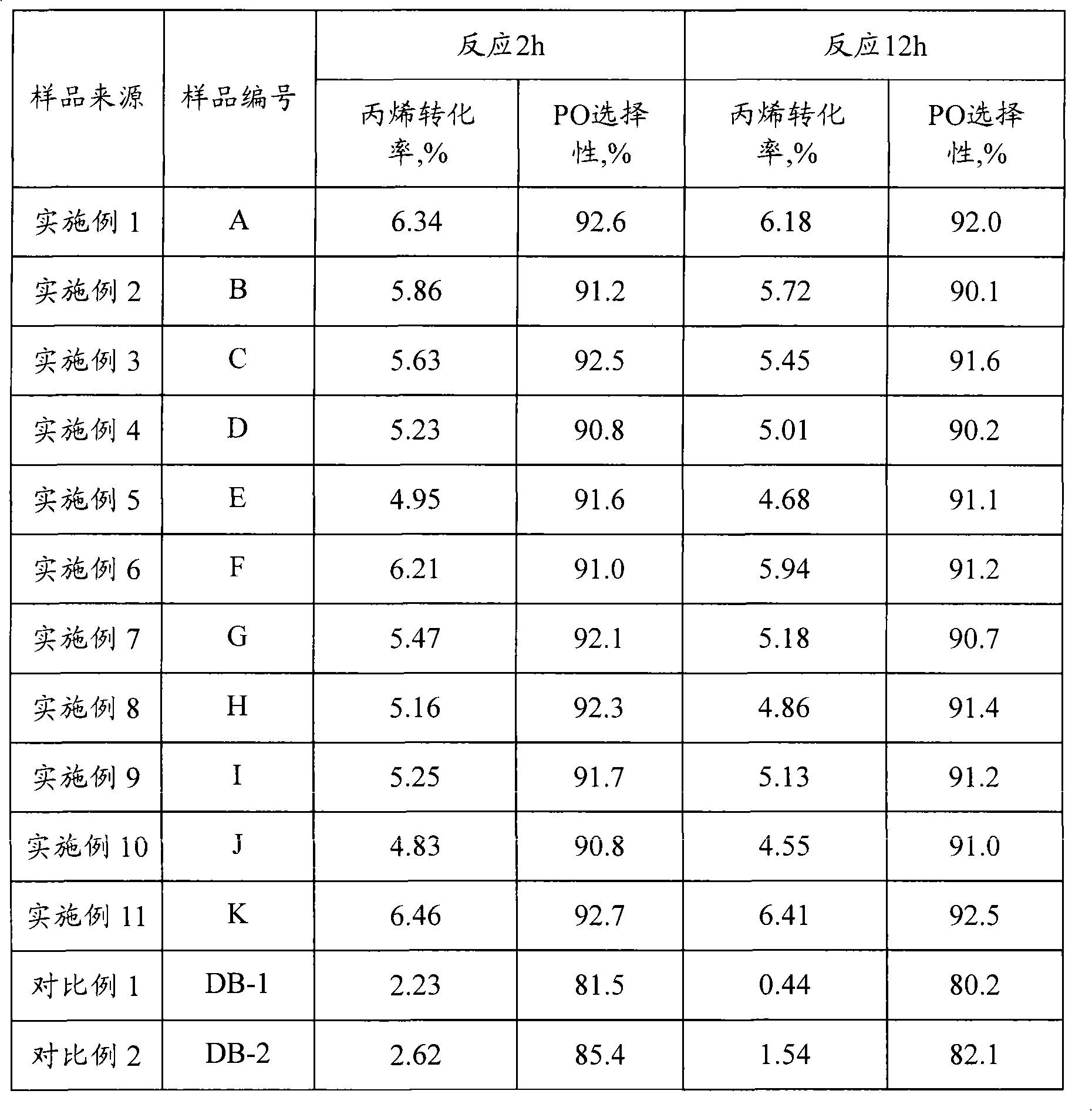Modification method for titanium-silicon molecular sieve
A titanium-silicon molecular sieve and modification technology, which is applied in the direction of molecular sieve catalysts, chemical instruments and methods, physical/chemical process catalysts, etc., can solve the problems of low effective utilization, poor stability, low catalyst activity, etc., and achieve the increase of total titanium content , good stability and high selectivity
- Summary
- Abstract
- Description
- Claims
- Application Information
AI Technical Summary
Problems solved by technology
Method used
Image
Examples
preparation example Construction
[0022] In the preparation method provided by the present invention, the reducing agent described in step (1) is selected from one or more of hydrazine, borohydride, sodium citrate, wherein hydrazine can be hydrazine hydrate, hydrazine hydrochloride, hydrazine sulfate, The borohydride can be sodium borohydride, potassium borohydride.
[0023] In the modification method provided by the present invention, the order of adding titanium-silicon molecular sieve, titanium source, protective agent, palladium source, reducing agent and alkali source is preferably mixed with titanium-silicon molecular sieve, titanium source, protective agent, palladium source, A reducing agent is added to the solution of the alkali source.
[0024]In the modification method provided by the present invention, the hydrothermal treatment described in step (2) is carried out according to the existing hydrothermal treatment method in the synthesis of titanium-silicon molecular sieves or the modification of ti...
Embodiment 1
[0032] Take 20 grams of titanium-silicon molecular sieve TS-1, concentration of 0.01g / mL (calculated as palladium atom) ammonium nitrate palladium complex solution, TiCl 4 , hydrazine hydrate and cetyltrimethylammonium bromide are added to the aqueous solution (mass percentage concentration 10%) of tetrapropylammonium hydroxide and stirred evenly, wherein titanium silicon molecular sieve (gram): TiCl 4 (mol): hexadecyltrimethylammonium bromide (mol): tetrapropyl ammonium hydroxide (mol): ammonium nitrate palladium complex (gram, in palladium): hydrazine hydrate (mol): water ( mol)=100:0.1:0.005:0.5:2.0:3.0:1000. Then put it into a stainless steel sealed reaction kettle, hydrothermally treat it at a temperature of 150°C and autogenous pressure for 48h, filter, wash, dry at room temperature, and then roast it in a nitrogen atmosphere at 550°C for 5h to obtain a modified microporous titanium-silicon molecular sieve, which is denoted as a.
Embodiment 2
[0034] Take 20 grams of titanium-silicon molecular sieve TS-1, a palladium chloride solution with a concentration of 0.01g / mL (calculated as palladium atoms), Ti(SO 4 ) 2 , hydrazine hydrochloride and polyacrylate are added to the aqueous solution of sodium hydroxide (mass percentage concentration 15%) and stirred evenly, wherein titanium silicon molecular sieve (gram): Ti(SO 4 ) 2 (mol): polyacrylate (mol): sodium hydroxide (mol): palladium chloride (gram, calculated as palladium): hydrazine hydrochloride (mol): water (mol) = 100: 0.5: 0.9: 1.0: 0.15: 0.1:1600. Then put it into a stainless steel sealed reaction kettle, hydrothermally treat it at 180°C and autogenous pressure for 24h, filter, wash, dry at 110°C for 3h, and roast at 450°C for 5h in a nitrogen atmosphere to obtain the modified microporous titanium-silicon molecular sieve B .
PUM
 Login to View More
Login to View More Abstract
Description
Claims
Application Information
 Login to View More
Login to View More - R&D
- Intellectual Property
- Life Sciences
- Materials
- Tech Scout
- Unparalleled Data Quality
- Higher Quality Content
- 60% Fewer Hallucinations
Browse by: Latest US Patents, China's latest patents, Technical Efficacy Thesaurus, Application Domain, Technology Topic, Popular Technical Reports.
© 2025 PatSnap. All rights reserved.Legal|Privacy policy|Modern Slavery Act Transparency Statement|Sitemap|About US| Contact US: help@patsnap.com

